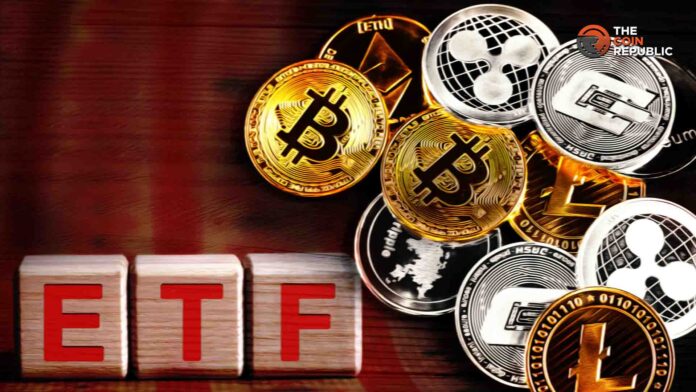Crypto fundamentals 101 Chapter 1: Capital Efficiency
1. Introduction
Archimedes once said “Give me a lever long enough and a fulcrum on which to place it, and I shall move the world”
He knew that the longer the lever, the less force he needed to apply to move a given object. Point being, efficiency has been pursed since the ancient times. Doing more with less. Efficiency still is one of the main metrics to analyze business models out there. Crypto is no exception.
One of the most well known metrics within DeFi is the TVL (Total Value Locked) which arguably is the capital a protocol needs to operate. It is not the only one though, as the protocol also needs money to pay salaries, infrastructure etc. But today we will focus only on the liquidity the protocol relies on and how efficient is each protocol in the usage of it.
2. The higher the capital efficiency, the better
Care to explain ser?
Sure, in short you want to be able to generate the biggest amount of fees with the least amount of TVL.
In other words you want to maximize the following metric.
Capital efficiency = Total Revenue / Total Value LockedWhy?
Almost always the goal of a project is to maximize profits. For that to happen you need to increase revenues and reduce costs.
TVL most of the times is an indirect cost. Liquidity supply is never infinite, in fact is scarce, very scarce, specially now in the middle of the bear market. That is why protocols must compete offering better and better yields so users park their funds on that protocol.
When your protocol is not generating that much revenue per unit of TVL, you need to add another yield on top of the organic one so you remain to be a sweet deal for liquidity providers. That is where liquidity mining programs enter in the stage, as you can see in the previous article I wrote, there are not many profitable protocols if we count their emissions as costs.
There is one caveat to this rule. That pursuit of the more the better could lead you to catastrophes like LUNA. So safety should be even more important than capital efficiency. If a protocol offers undercollateralized loans, it might be more capital efficient, but is also at a bigger risk to be exploited, and you can never be too safe on crypto so let’s reformulate to:
“The more the better, as long as the protocol remains within acceptable risk parameters”
3. Current outlook
We will use fees generated by the protocol as Total Revenues, here we are including both the supply side revenue and the protocol revenue, it’s the best thing to do imo due to including both the organic payout LPs and the protocol will receive and thus taking into account the whole revenue generation of the protocol. Don’t worry, we will focus solely on protocol revenues in future chapters.
If we take a look at the Top 20 Dapps by Fees featured in Tokenterminal we can appreciate big differences in fee generation between protocols, being the difference almost x100 between Uniswap Goldfinch. Main takeaways:
-
Crypto as a nascent industry still does not have a huge amount of established players and market leaders hoard most of market share.
-
DEXes (spot, perp NFTs) Lending are the biggest segments
-
“Time in the market” is important (Uniswap, Opensea..) but does not establish a heavy glass ceiling (Convex, GMX, Flashbots..)

Now let’s a look at TVL…
Differences are not so big compared to fees, but still 86% of DeFi TVL sits in 8 protocols. Pretty nuts right?
Also worth mentioning that here we can clearly appreciate the top protocols tend to be the DeFi bluechips, which makes sense as the market perceive their smart contracts are battle tested and represent a lower risk on average.

If we calculate the Fees/TVL (Capital Efficiency) of the Top 20 Dapps by Fees and we sort it we obtain the following table. A few comments first:
-
NFT marketplaces liquidity is really difficult to estimate, so I have made one approximation for Opensea with the help of Nansen NFT Paradise module average listing rates across collections (5-7% in the bigger ones) and work under the assumption that LooksRare X2Y2 have the same capital efficiency.
-
Flashbots ENS do not rely on liquidity to offer their service, so their capital efficiency its “infinite”. Both are “perfect” business models in this metric.
-
DyDx does not rely in liquidity directly, so it is a good biz model in this aspect but not as good as the previous ones due to needing liquidity indirectly and incentivizing it heavily.

-
Flashbots, ENS DyDX are the “perfect” business models according to this metric
-
Big differences in lenders between more traditional safe lenders like Compound or AAVE at the bottom of the table and more risky models like Goldfinch or Maple that are top performers in capital efficiency
-
Option protocols showing very promising metrics, specially Lyra, due to their pricing mechanisms and high volume
-
NFT marketplaces capital efficiency is among the top performers also, even though the exact number could vary as it is an estimation
-
DEXes sit at the middle of the table, with not that much differences among them with the exception of Balancer, which is currently incentivizing heavily with LM.
-
Perp DEXes show big differences between GMX and SNX, due mainly to usage and SNX requirement of maintaining a high collateralization ratio
-
Stablecoin seem to be the lowest capital efficient use case
4. Advice going forward
We have already seen capital efficiency should be an important metric fundamentally evaluating protocols, as the higher it is, the higher the organic yield for liquidity providers and profits for the protocol.
Beware of extremely high capital efficiencies, many times those could be attributed to risky business practices, so make sure to double check whether they are on the safe side previously to lend them your hard earned money.
The median of the 20 protocols is 1,91%.
I would consider more than 2% a good metric here.
More than 5% would be great.
Higher than 20% could be awesome.
Please make sure to double check in case of high rates to avoid being exposed to risky practices.
5. Final remarks
Thanks for reading! Hope you enjoyed it reading as much as I writing it.
Next article coming in two weeks…. won’t disclose the title to avoid being frontran, CT dark forest is crazy these days :)
Crypto fundamentals 101 will always be free, but if you leverage trade and want to give GMX a try, feel free to use my ref code to obtain a 10% discount on fees and collaborate with content creation.

Disclaimer: The content of this article solely reflects the author's opinion and does not represent the platform in any capacity. This article is not intended to serve as a reference for making investment decisions.
You may also like
Cardano Surpasses Bitcoin and Ethereum in Institutional Inflows

VIPBitget VIP Weekly Research Insights
In recent weeks, rising risk-averse sentiment and declining demand for leverage have led to a sharp drop in yields across Earn products. On major DeFi platforms, stablecoin yields have fallen below 4%, while on centralized exchanges, yields on stablecoin-based Earn products now hover around 2%. In contrast, Bitget HodlerYield offers users a 10% APR on stablecoins, with no 7-day cooldown for withdrawals or claims. Funds can be deposited and redeemed instantly, offering greater convenience and flexibility.

Bitwise’s Crypto ETF Strategy Amid Market Turmoil
Bitwise has introduced three new actively managed ETFs focused on generating income from crypto-related stock volatility. The crypto ETFs use synthetic covered call strategies to collect premiums while limiting exposure to sharp upward price movements. IMST targets Strategy’s volatile stock to generate monthly income through advanced algorithmic options trading.

Ethereum Price Approaches Resistance—Will It Smash Through?

